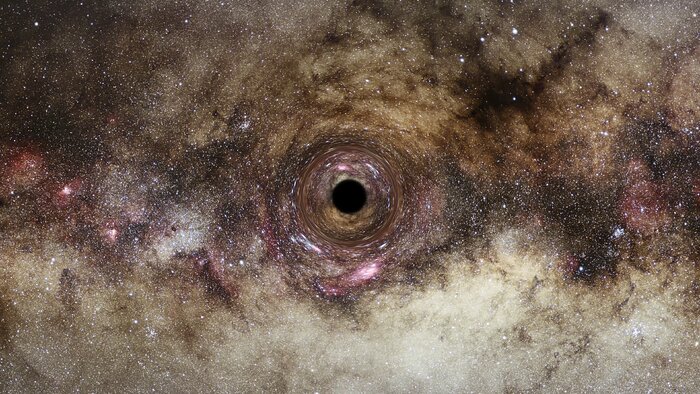Ultramassive black hole found is one of the largest ever
A team of researchers in the physics department at the U.K.’s Durham University has made a significant breakthrough in the field that could lead to a wealth of discoveries and revelations about the cosmos. Using a combination of gravitational lensing and supercomputer simulations, they have discovered one of the largest black holes ever detected.
Gravitational lensing is a phenomenon where the light from a distant object, such as a galaxy, is bent by the gravity of a foreground object, causing it to appear distorted or magnified. The team used this effect to study how light is bent by a black hole inside a galaxy hundreds of millions of light years away from Earth.
To achieve their discovery, the team ran hundreds of thousands of simulations of light moving through the universe. By analyzing the results of these simulations, they were able to identify an ultramassive black hole that has a mass of over 30 billion times that of our own sun.
“This particular black hole, which is roughly 30bn times the mass of our Sun, is one of the biggest ever detected and on the upper limit of how large we believe black holes can theoretically become, so it is an extremely exciting discovery,” said James Nightingale, an astronomer at Durham and the paper’s lead author, in a statement for the Royal Astronomical Society.
The university released a video that shows the methodology used to make this groundbreaking discovery:
This is the first time an ultramassive black hole has been discovered using gravitational lensing, and it is a significant milestone in the study of black holes.
“Most of the biggest black holes that we know about are in an active state, where matter pulled in close to the black hole heats up and releases energy in the form of light, X-rays, and other radiation,” Nightingale said.
“However, gravitational lensing makes it possible to study inactive black holes, something not currently possible in distant galaxies. This approach could let us detect many more black holes beyond our local universe and reveal how these exotic objects evolved further back in cosmic time.”
The team’s findings have been published in the prestigious scientific journal Monthly Notices of the Royal Astronomical Society. The discovery has generated excitement among scientists and the general public alike, as it provides a glimpse into the mysteries of the universe and opens up new avenues for research in astrophysics.






